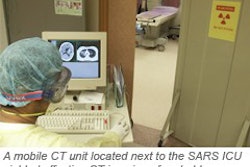Dear CT Insider,
Over the past year, lung CAD algorithms have evolved to become reliable second readers of thoracic CT exams. In study after study presented at the 2003 RSNA meeting, lung CAD systems could be counted on to improve the detection rate of solitary pulmonary nodules, even small or hard-to-find abnormalities such as those adjacent to vascular structures.
The current generation of lung CAD systems is sure to be welcomed by radiologists dealing with the enormous task of finding lung cancers while there's still time to cure them. The systems aren't perfect by any means -- they're not so good at differentiating between the clinically significant and the unimportant, and they produce plenty of false positives that radiologists have to eliminate individually. But recent advances have been impressive, as you'll note in this edition's Insider Exclusive story, published for CT Insider subscribers before it is made available to our other AuntMinnie members.
While you're visiting the community, don't miss an engaging overview of CAD technology by AuntMinnie.com contributing writer Kate Madden Yee, who chronicles the evolution of CAD systems from the research lab to the clinical mainstream.
And you'll want to check out the latest news in CT perfusion, where the modality's star is rising in the time-critical area of acute stroke imaging. Radiologists from Germany used new perfusion techniques and software to help determine which patients would benefit from thrombolytic therapy, and which ones would only be subjected to needless risk. You'll find the story here.
Finally, we're always on the lookout for innovation in CT imaging. If you're interested in contributing an article to the CT Digital Community, please don't hesitate to drop me a line.




















